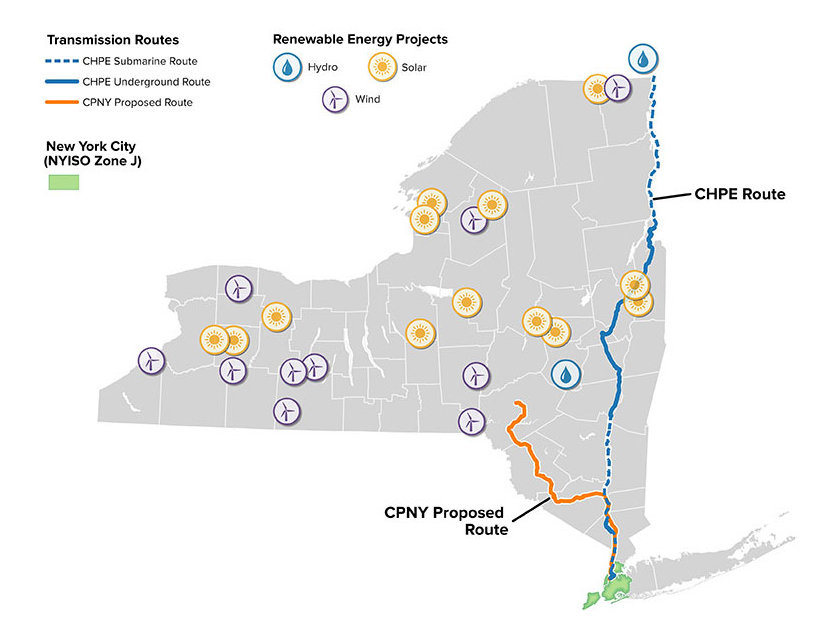
Internal Controllable Lines
NYISO’s Management Committee voted Nov. 29 to approve tariff revisions establishing market rules for “internal controllable lines” (ICLs), recommending they be approved by the Board of Directors.
The ISO’s Business Issues Committee previously approved the provisions, which set energy market, capacity market and market mitigation rules for ICLs. Clean Path New York, a 175-mile, 1,300-MW HVDC line selected as a Tier 4 project to deliver renewable power from upstate to New York City, will soon become the state’s first ICL. (See “Internal Controllable Lines,” NYISO Stakeholders Advance Rules on Ambient Ratings, Internal Controllable Lines.)
The changes seek to optimize ICL flows through economic dispatch and prohibit bilateral energy market transactions using ICLs as their source or sink. Additionally, ICLs will have defined operating ranges, bid curves and ramp limits to ensure system stability.
If approved by the board, the rules are expected to be filed with FERC in the first quarter of 2024.
Ambient-adjusted Ratings
The MC also moved to approve and recommend the board approve tariff revisions aligning day-ahead market (DAM) congestion settlement procedures with ambient-adjusted ratings (AARs).
FERC Order 881 requires transmission providers to evaluate transmission capacity based on real-time environmental conditions and mandates the use of AARs for short-term transmission requests, and seasonal ratings for long-term requests (RM20-16).
The ISO’s proposed revisions address discrepancies between AAR rating limits in the DAMs and those used in transmission congestion contract (TCC) auctions. The changes revise calculations for the congestion rent impacts of uprates and derates and create a new category of qualifying events, which emerge from differences between the DAM ratings required by Order 881 and those assumed in TCC auctions.
The BIC also previously approved these revisions. (See NYISO Stakeholders Advance Rules on Ambient Ratings, Internal Controllable Lines.)
If approved by the board, the ISO plans to implement these revisions alongside compliance proposals already accepted by FERC.

